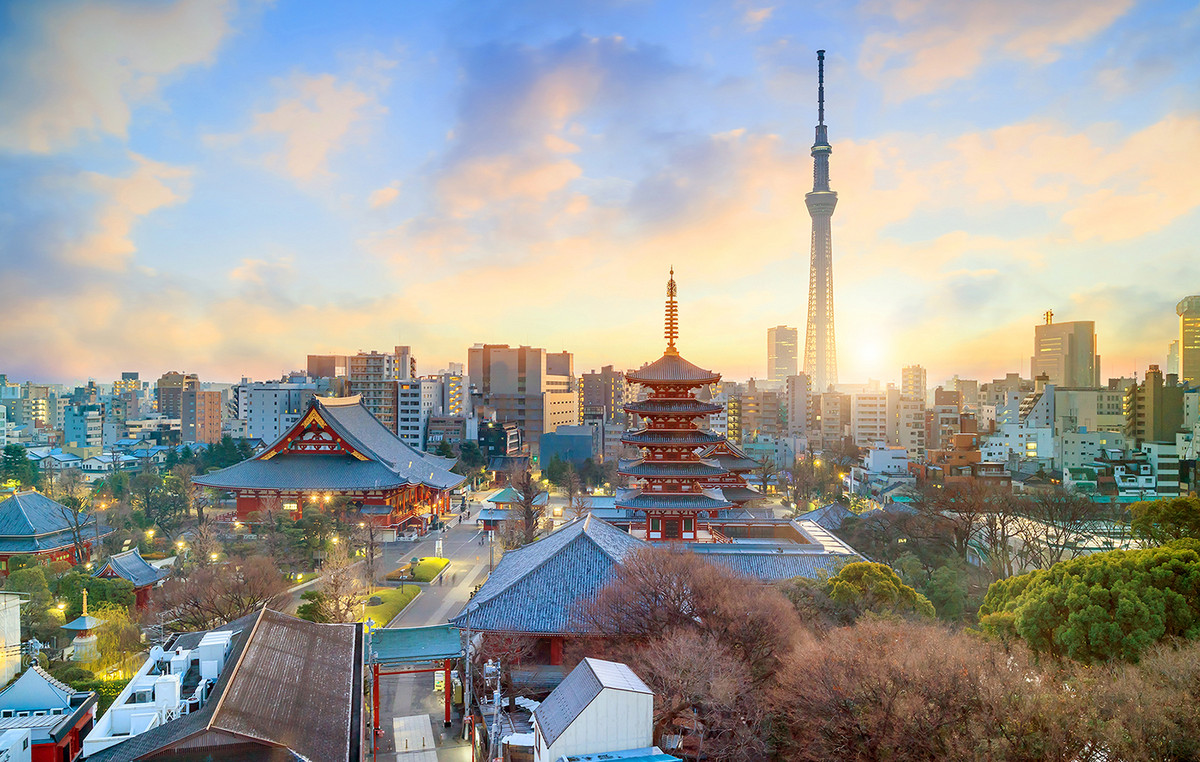It’s an arms race bigger than anything Asia has ever seen: three major nuclear powers and one rapidly developing. The world’s three largest economies and decades-old alliances, all vying for an advantage in some of the world’s most contested land and sea areas.
On one side are the United States and its allies, Japan and South Korea. On the other hand, China and its partner Russia. And in a third, North Korea.
With each wanting to be one step ahead of the others, everyone is caught in a vicious circle that is spinning out of control. After all, one man’s deterrence is another man’s escalation.
“We’re going to continue to see this dynamic spiral in East Asia, where we don’t have restriction measures, we don’t have arms control,” Ankit Panda, a nuclear policy expert at the Carnegie Endowment for International Peace, told CNN .
The visit by Japanese leaders to Washington last week only served to underscore the point. On Friday (13), fresh from a meeting with US President Joe Biden, Japanese Prime Minister Fumio Kishida expressed his concern about China’s military activities in the East China Sea and the launching ballistic missiles over Taiwan that landed in waters near Japan in August.
Kishida warned Beijing against trying to “change the international order” and said it was “absolutely imperative” that Japan, the US and Europe remain united on China. His words come just days after the US and Japanese ministers spoke ominously about the “continued and accelerated expansion of the nuclear arsenal [da China]”.
However, according to North Korea and China, it is Japan that is the aggressor. They saw Tokyo recently pledge to double its defense spending while acquiring weapons capable of hitting targets deep inside Chinese and North Korean territory.
And their purported concerns have only been heightened by the announcement just days ago of plans for new US Marine deployments to Japan’s southern islands, including new mobile anti-ship missiles designed to thwart any first strikes by Beijing.
For the United States and Japan, such moves are about deterrence; for Beijing, they are escalating tensions.

digging up the past
China claims its concerns are based on historical reasons. He says he fears that Tokyo is reverting to the military expansionism of the World War Two era, when Japanese forces controlled vast swaths of Asia and China took the brunt. About 14 million Chinese died and up to 100 million became refugees during the eight years of conflict with Japan, from 1937 to 1945.
Beijing insists that the plans, which include Japan acquiring long-range “counter-attack” weapons such as Tomahawk missiles that can hit bases inside China, show that Tokyo threatens peace in East Asia once again.
But critics suspect that China has a secondary motive for digging up historical wounds — diverting attention from its own military buildup.
They point out that even as Beijing vehemently dismisses US and Japanese concerns about its own burgeoning military might, it has been building up its naval and air forces in areas close to Japan while laying claim to the Senkaku Islands, an uninhabited Japanese-controlled chain in the Sea of Eastern China, as its sovereign territory.
In late December, Japan said Chinese government ships had been sighted in the contiguous zone around the islands, known as Diaoyus in China, on 334 days in 2022, the most since 2012 when Tokyo acquired some of the islands from one owner. of Japanese lands. From Dec. 22 to Dec. 25, Chinese government vessels spent nearly 73 consecutive hours in Japanese territorial waters off the islands, the longest incursion since 2012.
China has also been raising the temperature by strengthening its partnership with Russia. A State Department official told the CNN recently that this not only spurred some of the US-Japan deals, but that Russia’s invasion of Ukraine “moved things faster than the speed of light”, given how Russian President Vladimir Putin and Chinese leader Xi Jinping have shown its proximity in preparation for the Beijing Olympics.
And Russia has been showing off its military skills in the Pacific, including in December when its warships joined Chinese ships and planes for a week-long live-fire exercise in the East China Sea.

Beijing’s aggressiveness has been particularly visible when it comes to Taiwan, an autonomous island of 24 million people that the Chinese Communist Party claims as its territory, despite never having controlled it.
Xi has refused to rule out using military force to bring the island under Beijing’s control, and China has increased its aggressive military activities around the island, especially since then-U.S. House Speaker Nancy Pelosi’s visit in August. . In the days following Pelosi’s visit, China held unprecedented military exercises around the island, firing several missiles near its waters and sending its warplanes.
Last week, China sent 28 warplanes across the midline of the Taiwan Strait, including J-10, J-11, J-16 and Su-30 fighter jets, H-6 bombers, three drones and a warning aircraft. and recognition. That exercise mirrored a similar one on Christmas Day, when the People’s Liberation Army sent 47 aircraft across the midline.
Amid such actions, US resolve remained strong. Washington continued to approve a growing list of military incursions to the island, in line with its obligations under the Taiwan Relations Act.
North Korea’s Nuclear Escalation
1,600 kilometers north of Taiwan, talk of cooperation on the Korean peninsula is a dim and dying light.
North Korean leader Kim Jong Un calls for an “exponential increase” in his country’s nuclear weapons arsenal, starting in 2023, and is building a fleet of “super-large” mobile rocket launchers that can hit any point in the south with a nuclear warhead.
In a report released on Thursday, the South Korean Institute of Defense Analysis (KIDA) said Kim’s plan could manifest itself in 300 weapons over the next few years.
That’s a big step up from 2022, when the Stockholm International Peace Research Institute (SIPRI) estimated it had 20 nuclear weapons assembled and enough fissile material to make up to 55.

Three hundred nuclear warheads would put North Korea ahead of the long-established nuclear nations of France and the UK and leave it behind only Russia, the US and China in SIPRI’s ranking of nuclear stockpiles.
Such a perspective made the South Korean president, Yoon Suk Yeol, promise his own military strengthening.
“Firmly building a (military) capability that allows us to counterattack 100 times or 1,000 times more if we are attacked is the most important method to prevent attacks,” Yoon said this week in comments reported by the Yonhap news service.
He even raised the possibility of South Korea building its own nuclear arsenal, suggesting that his country could “deploy tactical nuclear weapons or possess nuclear weapons of its own”.
The idea of the Korean Peninsula harboring even more nuclear weapons is something that US leaders fear greatly, even if those weapons belong to an ally.
The development of nuclear weapons would also mean that South Korea would lose some of the high morale it has occupied by its adherence thus far to the 1992 Joint Declaration on the Denuclearization of the Korean Peninsula, which Pyongyang has repeatedly violated.
So, to reassure its ally, the US made it clear that Washington’s support for South Korea is “iron encrusted” and all US military assets are available to protect it.

“The United States will not hesitate to fulfill its extended deterrence commitment to [a Coreia do Sul] using a broad spectrum of US defense capabilities that extends to nuclear, conventional and missile defense as well,” Admiral Mike Gilday, chief of US naval operations, said at a virtual forum at the Institute of Korean-American Studies ( ICAS) on Thursday.
Gilday cited as an example of US support for the south the visit of a US aircraft carrier to the South Korean port of Busan last year. But it is precisely this display of one of Washington’s most powerful warships in North Korea’s backyard that Pyonygang sees as a threat.
And the spiral continues.
Still, as Asia’s arms race accelerates, one thing that has become clear is that the US, Japan and South Korea will engage as a group rather than as isolated individuals.
The presence of Kishida and other Japanese leaders in Washington last week provided ample visual evidence of this.
“The closer we work together, the stronger we become,” Admiral Gilday said of the three-way cooperation during his speech to ICAS. “Hope [isso] convince any potential opponent that a move is not worth making.”
Perseverance is needed in the face of relentless pressure from opponents, he added.
“We must not be dissuaded and we must not lose heart in terms of what it takes for all of us to come together.”
Source: CNN Brasil
Bruce Belcher is a seasoned author with over 5 years of experience in world news. He writes for online news websites and provides in-depth analysis on the world stock market. Bruce is known for his insightful perspectives and commitment to keeping the public informed.






